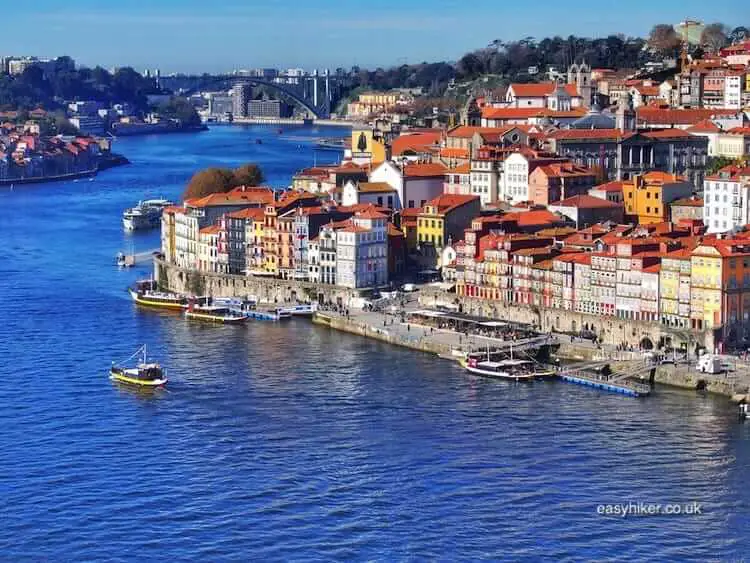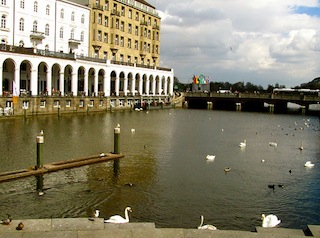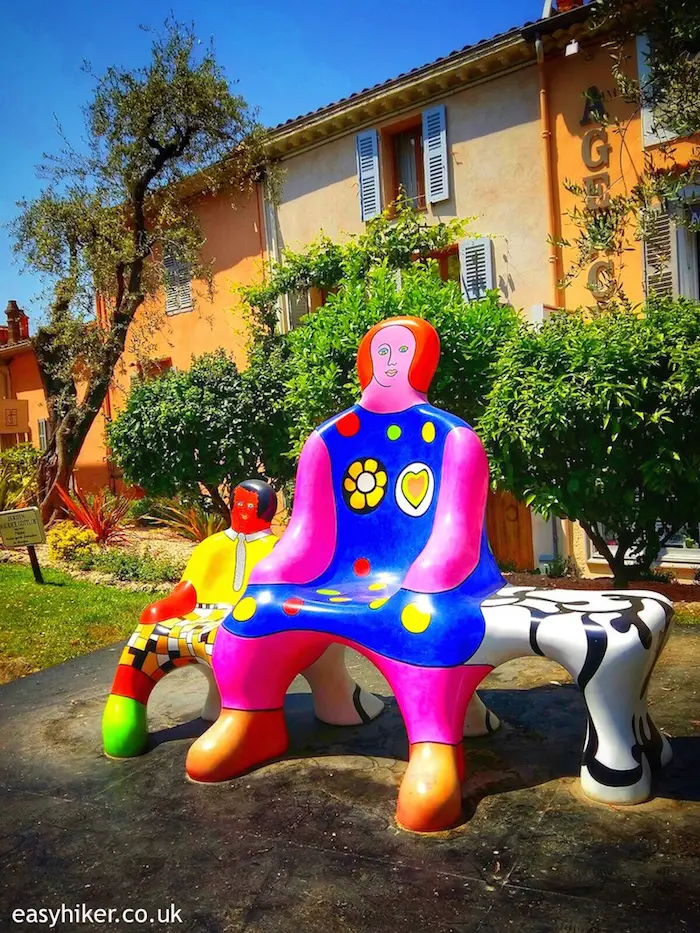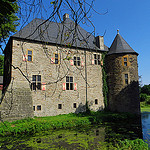St Pauli is the oldest of Hamburg’s Szeneviertels, although you would not have called it a “trendy neighbourhood” when people began to settle here in the late Middle Ages.
St Pauli started its life as Hamburg’s messy attic: everything that the municipal administration did not want inside the city walls but, for various reasons, did not intend to get rid of entirely eventually wound up here, from the municipal slaughterhouses and the Pesthof (the asylum for patients suffering from the plague and leprosy) to homes for all those folks who were “weary with disasters and tugged with fortune”, the destitutes and the prostitutes.
This, basically, is what St Pauli remained for centuries, but over the last 30 years, the quarter has changed – well, at least some of it has.
If you cross over into St Pauli from the Karolinenviertel in the northeast, coming in via the Neuer Pferdemarkt, you will be entering leafy and genteel streets …

… and breathe in an atmosphere that is almost village-like.

In these streets, the rough edges of St Pauli have clearly been smoothed out, but many of the people who have engineered this gentrification – by bringing in their middle-class culture of fashion boutiques and independent book shops – are now working hard to preserve the memory of their quarter’s older traditions.
In Wohlwillstraße, a neigbourhood committee has commemorated some of the street’s past inhabitants by attaching plaques to the front doors of old buildings. These small panels manage to sketch complicated biographies in just a few sentences – telling, for example, the story of the Jewish performance artist who came back to live in Wohlwillstrasse after WWII, having abandoned a successful stage career – based on a dance act with his sister – when the Nazis came to power.
His sister died in a concentration camp, but he managed to escape, eventually continuing his career with a solo dance act in women’s clothes. Is it too far-fetched to say that he morphed into a composite of himself and his murdered sister?
Walking through this historically rich neighbourhood, you will wonder what other fascinating stories lie hidden behind those ancient doors and windows – but intriguing events are not the exclusive privilege of the past, and with a little bit of luck, you may literally stumble upon something that happened only a few hours ago.
Granted: this scene cannot match any of the biographical plaques in depth and historical dimension, but it shares with them an element of mystery. I mean, what happened here?

Further down Wohlwillstrasse, you will find yourself only a few blocks away from the port. The house fronts may not give that away, but if you peek into the backyards, you will find traces of the maritime trade activities that dominated this quarter for much of its history.

The transition into “hardcore” St Pauli then happens very quickly. Within a block or so, the feel of the place becomes less genteel, and before you can prepare yourself properly for what is to come, you have already reached the Grosse Freiheit, one of the three main streets that make up the spine of central Europe’s most notorious amusement mile.
Turn left into Grosse Freiheit, which initially looks scruffy rather than scandalous, a lot like any inner city quarter that has fallen a little into neglect.
Do not, however, miss the Indra club just before the intersection, …

… which is a major landmark in the career of the Beatles.
Everybody knows about the Star Club (which was located a little further down Grosse Freiheit at no. 39), but this is where, before that, the Fab Four gave their first concert on German soil in August 1960.
The Star Club shut its doors forever in 1969, but the Indra is still very much in business, nowadays hosting mainly performances with a nostalgic 1960s theme.
Cross the street ahead of you, the Simon-von-Utrecht-Strasse, and continue straight into Grosse Freiheit. This is where the St Pauli of legend really begins.
Immediately on your right, you will spot one of Hamburg’s most beautiful churches, the Italianate St Joseph’s, which is surrounded on all sides by all-night bars and strip clubs. This is how today’s St Pauli likes to present itself: naughty but nice, hardcore with a heart of gold.

The Star Club no longer exists – even in 1969 it should have been obvious that the decision to alter the historical site beyond recognition would come back to haunt the city – but, in a gesture of atonement, a monument to commemorate Hamburg’s most famous residents of the 20th century was erected at the very end of Grosse Freiheit, right at the corner with the high street of St Pauli, the famous Reeperbahn.
Hamburg St Pauli – Hardcore with a Heart of Gold

Most of the municipality’s efforts to gentrify St Pauli have focused on the Reeperbahn. After a series of violent turf wars between rival gangs in the 1980s had drawn the entire nation’s attention to St Pauli’s problems, the city fathers launched an ambitious project to upgrade and uplift the quarter.
Rather than closing down the strip clubs, the idea was to shift the focus towards higher-quality entertainment by turning old and run-down traditional venues into modern arenas for musicals and cabaret performances. This was meant to transform the Reeperbahn from a no-go area for respectable folks into a street where locals and visitors alike could go for an evening of family fun.

Up to a point, this is still a work in progress. In the meantime, much of today’s Reeperbahn comes across as the German version of a down-at-heel English seaside resort on a bad day.

If you want to find “what-made-St-Pauli-famous”, you should walk down the third of the quarter’s main streets, the Davidstrasse.

You should be aware, however, that the street springs to life as soon as the sun starts to set. If you are in the company of children, be ready to explain what all the loosely dressed women loitering in the street are waiting for.
And whatever you do: do not take any female members of your walking party behind this wall at the entrance of Herbertstrasse …

… unless you want to cause a full-scale riot. (The women who are working in this environment are not to be messed with.)
Finish the walk with a brief excursion to the Fischmarkt (if you want to see actual fish for sale, you must come early on a Sunday morning, no later than 9 am) …

… even though the traditional St Pauli Fish Market is no longer a part of St Pauli: since the administrative borders of Hamburg’s inner suburbs were redrawn, it now belongs to neighbouring Altona – as does even St Pauli Church, the house of worship which gave the entire quarter its name.
St Pauli, meanwhile, managed to seize Altona’s most beloved landmark building, the neo-Romanesque Peace Church. Weird or what?
But this is only par for the course in a city that manages to square the circle of seemingly weird contradictions time and time again: a city where history and the ultramodern mix comfortably, where the romance of sailing ships and groundbreaking new architecture complement each other …

… just as well as baroque churches and strip clubs, where the cozy neighbourhood of the kiez and the vulgarity of the Reeperbahn exist cheek-by-jowl within a few hundred metres of each other.
Here’s to Hamburg!







